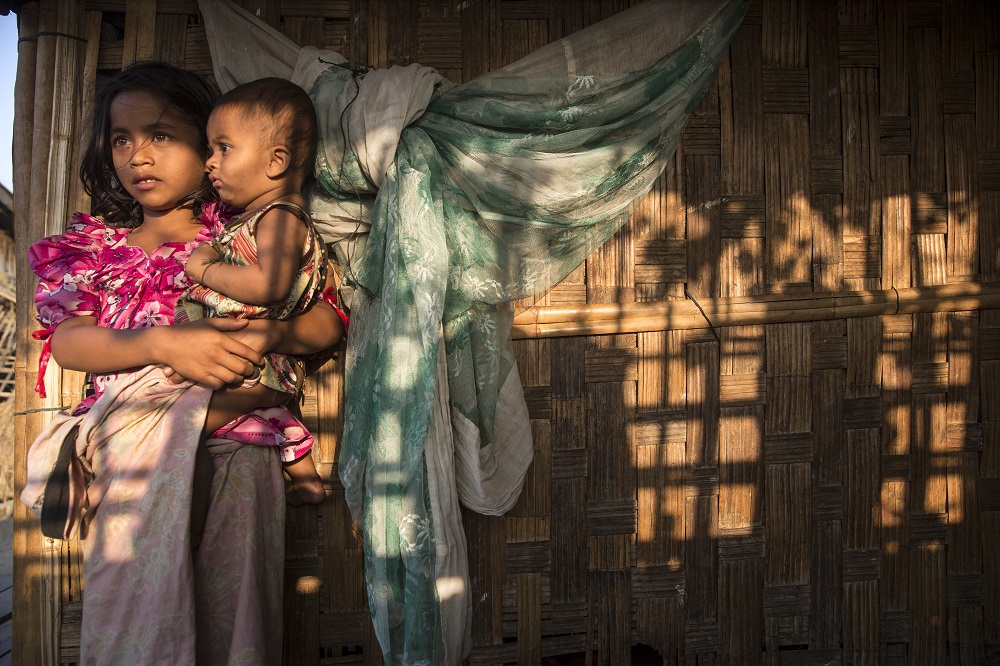September 01, 2017

“Tell whoever you can. People need to know.” A middle-aged Rohingya woman so urged Simon-Skjodt Center staff this past January in Bangladesh, near the Burmese border, after describing killings and destruction committed by Burmese security forces she had witnessed weeks earlier. She was one of approximately 74,000 Rohingya, a Muslim minority community in the majority Buddhist country of Burma, who fled mass atrocities in Rakhine State, in western Burma, in the fall of 2016.
In the months since, the Simon-Skjodt Center has been briefing government officials and human rights advocates about the urgent need to protect the Rohingya minority from future mass atrocities. The global response has been woefully inadequate. Renewed military attacks against Rohingya in the past week have alarmed even those who knew the long history of violence and persecution of the group given the rapid escalation of violence. The reports of deaths and destruction from August 25 to today are on track to outpace the levels of violence in recent years.
The Simon-Skjodt Center first warned of the risk of genocide of the Rohingya in 2015, following our investigation in western Burma. The Rohingya have faced state-led persecution, including the denial of their citizenship, severe restrictions on basic freedoms, and continued efforts by state and non-state actors to label them as “foreigners.” Our research at that time indicated that this persecution amounted to crimes against humanity, and put the Rohingya population at risk of genocide. Rohingya activists and survivors of violence who we interviewed had a similar refrain—they feared future mass killings by a government that, in their minds, had long sought to rid them from the country.
Since our initial investigation, the situation has steadily worsened. In October 2016, the Burmese military’s reaction to a deadly attack on police in northern Rakhine State included a disproportionate and indiscriminate response against Rohingya civilians. Burmese soldiers launched a campaign of attacks against Rohingya that included widespread killing, rape, and burning of villages. The Museum worked with Fortify Rights, a Southeast Asia-based human rights organization, to document these crimes against humanity committed during so-called military “clearance operations” from October 2016 to January 2017 in which security forces targeted civilians. We interviewed survivors who had crossed the border, seeking safety. They shared harrowing stories of brutal attacks by security forces against men, women, and children. Some described the sheer brutality of the violence as previously unthinkable, even given the longstanding persecution and violence from state forces.
Following these clearance operations, staff of the Simon-Skjodt Center raised the alarm not only about the widespread and systematic attacks on civilians from October 2016 to January 2017, but about the continued risk Rohingya face. The Burmese government has failed to heed the warnings and take steps to immediately protect Rohingya from military abuse, effectively investigate the allegations, hold perpetrators accountable, and dismantle the laws and policies that discriminate against Rohingya. Instead, the Burmese government dismissed allegations of atrocities, including a February 2017 investigative report from the Office of the High Commissioner for Human Rights. An internal military investigation concluded that the serious allegations in the report were either “totally wrong” or “exaggerations.” The dismissive nature of the Burmese government, and their rejection of an notion that they have an obligation to protect civilians in their country, has only further elevated concerns that the risk of further mass atrocities against the Rohingya population would only increase.
Those concerns were realized on August 25, when a fatal attack by a Rohingya non-state armed group targeted police posts and a military base, reportedly killing 12 people. The response by the Burmese military was swift and brutal. Satellite imagery analyzed by Human Rights Watch indicate widespread burning of villages in at least ten areas of northern Rakhine State. An estimated 40,000 Rohingya have fled from Burma to Bangladesh in the week following the August 25 attacks, and it is reported that tens of thousands more are walking to the border. The government has denied international observers access to the region making it difficult to confirm the number of dead, detained, or displaced.
The latest attacks on Rohingya civilians are shocking, yet all the warning signs of renewed attacks were there. The mass violence against Rohingya that is unfolding before us now is the result of a government that refuses to protect this minority population and an international community that has neglected to firmly press the Burmese government to do so. Reports are still coming in about the full extent of the latest attacks, but immediate international pressure on Burmese commander-in-chief Min Aung Hlaing is necessary to stop the patterns of military attacks on Rohingya civilians. These attacks demonstrate the urgency with which the recommendations of the Advisory Commission on Rakhine State, headed by former UN Secretary General Kofi Annan, must be adopted—including those relating to citizenship and freedom of movement. The full implementation of those recommendations rest upon the end of targeted attacks on Rohingya.
The ongoing attacks were preventable, as were the mass killings in the fall of 2016. The latest reports of atrocities, evidence of the latest prevention failure, should be the final impetus for the international community to press the Burmese government to uphold its obligations to protect Rohingya before there are no more Rohingya left to protect.
View All Blog Posts